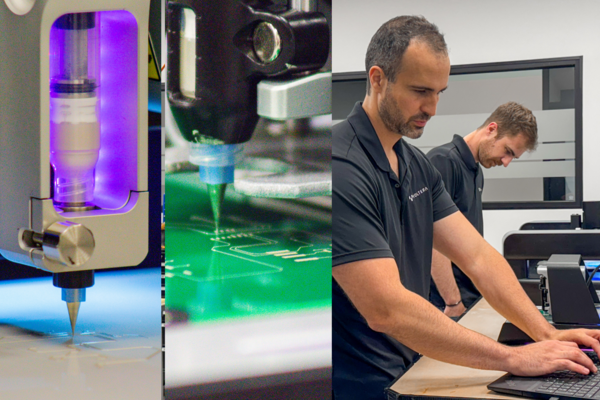
Smart antennas could “make the world a better place”
Low-cost antennas may one day bring Internet connectivity to billions of people in developing countries

Low-cost antennas may one day bring Internet connectivity to billions of people in developing countries
By Brian Caldwell Faculty of Engineering Safieddin (Ali) Safavi-Naeini has been immersed for more than 15 years in the complex technical details of his work on intelligent antenna systems for Internet connectivity.
Safieddin (Ali) Safavi-Naeini has been immersed for more than 15 years in the complex technical details of his work on intelligent antenna systems for Internet connectivity.
But as he embarks on the next phase of his cutting-edge research – a five-year project backed by $6.1 million in joint government-industry funding that was announced this year – he hasn’t lost sight of what his research could ultimately mean in the big picture.
“I am very optimistic that this will make the world a better place,” said Safavi-Naeini, director of the Centre for Intelligent Antenna and Radio Systems (CIARS) at Waterloo Engineering. “I’m hopeful we engineers can be a force for change.”
A team of researchers led by Safavi-Naeini, a professor of electrical and computer engineering, is developing low-cost, modular antennas capable of redirecting themselves electronically to maintain links with overhead satellites or base stations for ground networks.
Their most immediate application, the focus of a partnership with C-COM Satellite Systems Inc. of Ottawa, will be delivering broadband Internet service to moving vehicles – cars, planes, trains, buses – anywhere in the world.
Leslie Klein, a Waterloo Engineering alumnus who co-founded C-COM, said the size of that market alone would be “astronomical,” with flat antenna systems formed to the sides or roofs of vehicles providing inexpensive, reliable, high-speed connections.
Once the antennas are in mass production, both men envision an even greater impact in the vast majority of the world, especially developing countries, not serviced by expensive ground infrastructure. Antenna panels on the sides of buildings, for instance, could link directly to satellites instead.
Safavi-Naeini is “very honoured” to think the so-called active antenna systems – essentially many tiny, simple antennas working together, instead of one large parabolic antenna – could bring knowledge and opportunity to billions of people who have been left behind so far by the high-tech revolution.
“I believe we’re just scratching the surface of what is possible,” he said. “There are so many applications to come in the future, you cannot even imagine it.”
Two other near-term applications for the smart antennas – which would diagnose and adjust to the failure of some of their own parts, improving reliability through “graceful degradation” – are in 5G communications networks and sensors for autonomous cars.
Both areas would involve the use of millimetre wavelength radio frequencies, which have the potential to increase the capacity to send and receive data by 100 times or more.
For proposed fifth-generation mobile networks, which Safavi-Naeini expects to be a reality within about five years, the antennas could handle dramatically increased bandwidth while consuming little power due to their directed, focused beams.

Read more
Meet five exceptional Waterloo graduate students crossing the convocation stage as Class of 2025 valedictorians

Read more
Waterloo Engineering alum wears her iron ring proudly while building her career in quantum tech in Germany

Read more
Voltera prints electronics making prototyping faster and more affordable — accelerating research to market-ready solutions
Read
Engineering stories
Visit
Waterloo Engineering home
Contact
Waterloo Engineering
The University of Waterloo acknowledges that much of our work takes place on the traditional territory of the Neutral, Anishinaabeg, and Haudenosaunee peoples. Our main campus is situated on the Haldimand Tract, the land granted to the Six Nations that includes six miles on each side of the Grand River. Our active work toward reconciliation takes place across our campuses through research, learning, teaching, and community building, and is co-ordinated within the Office of Indigenous Relations.